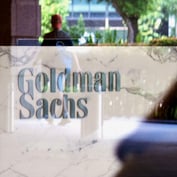Quick Take: When it comes to financials, many investors tend to focus on the well-known, large-cap banks, brokerages and asset managers. However, there are hundreds of smaller-cap financials that operate beneath Wall Street’s radar. Kenneth Mertz, manager of the Forward Emerald Banking & Finance Fund/A (HSSAX), invests in these little-known companies, and has reaped big rewards doing so for his investors.
For the year ended August 31, 2005, the $291-million fund gained 15.6%, versus 4.3% for the S&P 500 Financials Sector index, and 8.9% for the average sector fund investing in financials. For the three-year period, the fund registered an average annualized return of 21.1%, versus 10.3% for the index, and 11.6% for its peers. Over the five years, this portfolio’s 21.3% average annualized return has trounced the index, which rose 2.9%, and the peer group, which gained 7.6%. The strong performance was achieved with less volatility than its peers, and very low turnover.
In May 2005, Forward Management LLC, a San Francisco-based investment manager, adopted the three mutual funds run by Emerald Asset Management, adding the “Forward” name to each portfolio as a result. The transaction did not result in any changes to the way the funds invest, nor to the management teams. Mertz, who is based in Based in Lancaster, Pa., has run Forward Emerald Banking & Finance since its inception in 1997.
The Full Interview:
S&P: What is your investment philosophy?
MERTZ: We use a strictly bottom-up, fundamental research-driven process to identify small-cap financial companies — anything with market caps under $2-billion — that enjoy competitive advantages in niche markets. We are basically looking for companies exhibiting growth that exceeds our peer group, i.e., other small-cap financials.
We are also looking for stocks that are undervalued. Wall Street largely ignores these kinds of companies, creating pricing inefficiencies. Like their large-cap counterparts, small-cap financials are usually viewed as value plays, but we are growth managers.
S&P: What niche markets in financials do you like to invest in?
MERTZ: Our main subsectors are community banks and insurance companies. To a lesser extent, we also buy asset managers, real estate investment trusts (REITs), and brokerage firms. Our largest allocation is in community banks. Within this industry, we are seeking the prime commercial business lender in their respective region, or a bank that dominates some specialty niche. We also like community banks that are extremely good, low-cost deposit gatherers; i.e., they have the ability to raise their deposits, whereas their rivals may not.
S&P: What are the fund’s top holdings?
MERTZ: As of June 30: United Fire & Casualty (UFCS), 3.5%; Selective Insurance Group (SIGI), 3.2%; MB Financial (MBFI), 2.6%; Central Pacific Financial (CPF), 2.5%; and Prosperity Bancshares (PRSP), 2.5%. We typically keep between 100-125 stocks in the fund. As a risk control measure, no single holding can represent more than 5% of total assets.
S&P: How large is the universe?
MERTZ: Small-cap financials represent quite a large universe. For example, The Russell 2000 Index includes 400 financial services companies, while The NASDAQ Bank Index comprises over 500 banks.
S&P: Is the portfolio diversified by geography?
MERTZ: Yes. We are very diversified by region. For example, we own banks in Hawaii and California. But back in 2000 during the tech downturn, we had no exposure in California because we saw the economy would get hurt. We moved back into California in 2003 when the economy started to rebound.
We also have a lot of exposure in places with good banking markets like Texas, Chicago and the Southeast. Florida has a very good banking environment, but it’s very expensive. We have limited exposure there because the valuations are currently unattractive.
S&P: How much of the fund is exposed to community banks?
MERTZ: We currently have about 67% of our assets invested in community banks. Over the nearly seven years that we’ve run this fund, we have always had a significant exposure to this subsector. The allocation has typically ranged between 60% and 80%.
S&P: What makes community banks such attractive investments?








 October 11, 2005 at 08:00 PM
October 11, 2005 at 08:00 PM










